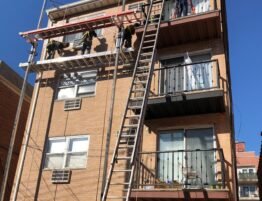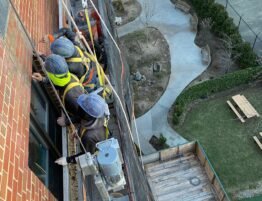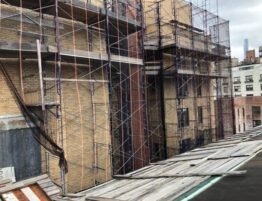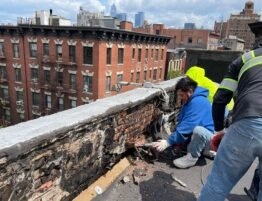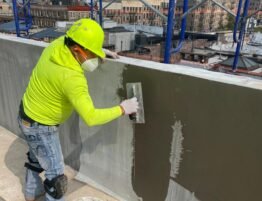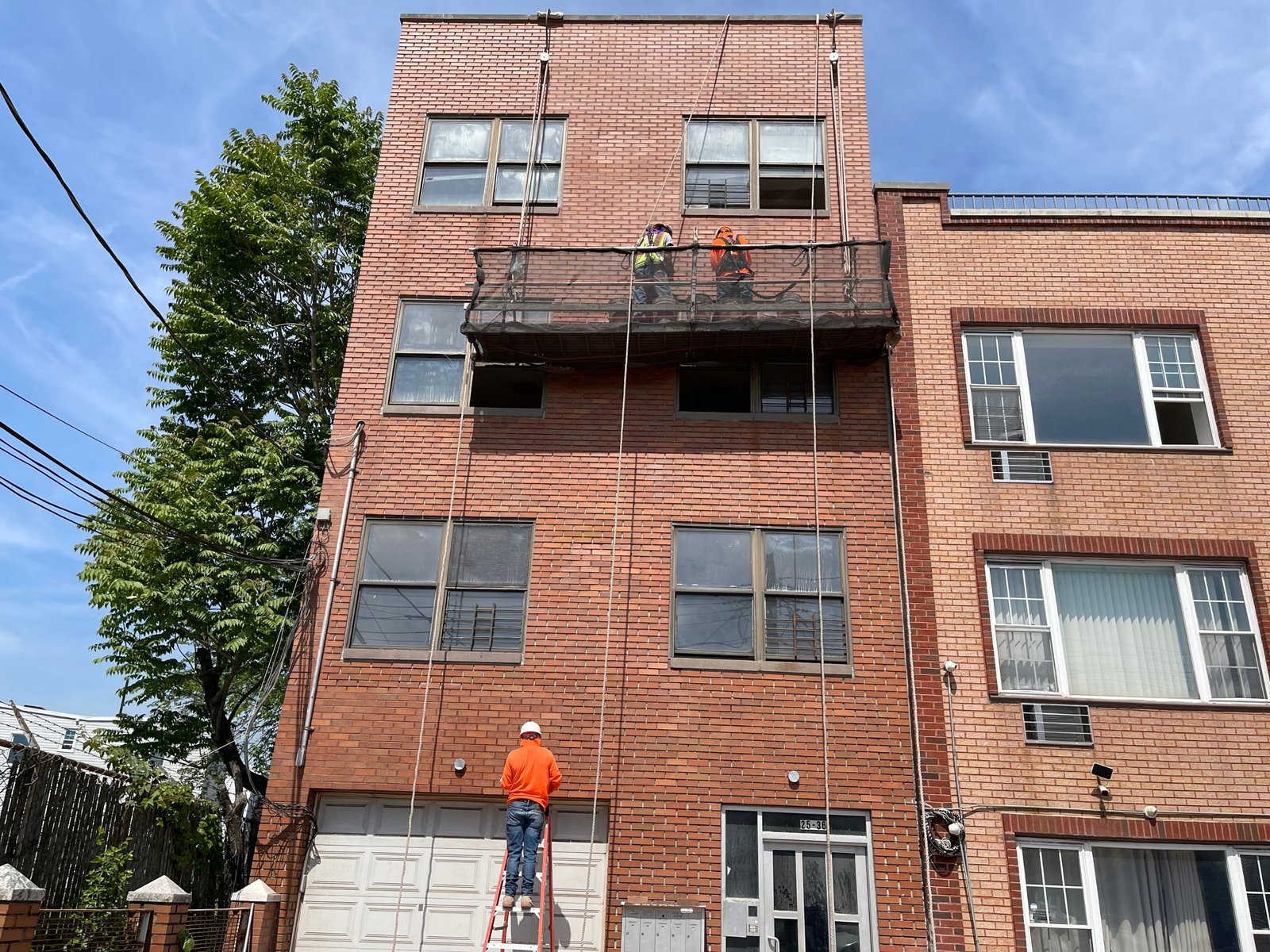
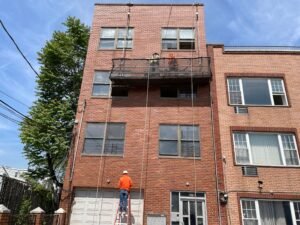 Building emergencies arrive without notice. It could be a roof giving way during a storm, a cracked pipe flooding multiple floors, a structural crack following a vehicle impact, or a post-fire crack and instability. In the face of such issues, coupled with occupant safety, asset integrity, and regulatory compliance, professionals who act promptly and undertake the necessary remedial work are needed. This guide touches on the circumstances that warrant emergency specialists, the reasons that call for experts to act immediately, and the smart and continuous maintenance that helps refrain from emergencies.
Building emergencies arrive without notice. It could be a roof giving way during a storm, a cracked pipe flooding multiple floors, a structural crack following a vehicle impact, or a post-fire crack and instability. In the face of such issues, coupled with occupant safety, asset integrity, and regulatory compliance, professionals who act promptly and undertake the necessary remedial work are needed. This guide touches on the circumstances that warrant emergency specialists, the reasons that call for experts to act immediately, and the smart and continuous maintenance that helps refrain from emergencies.
What counts as an emergency?
An emergency is any event that poses an immediate or nearly immediate threat of injury, damage to property, or the inability to access a building. Typical events include:
- The failure of structural elements (such as beams, load-bearing walls, or the development of major cracks).
- Water ingress of a large volume or rapid onset (such as the bursting of a main or the failure of a roof during a storm).
- Severe fire damage (for example, damage to the structural framing or surfaces or to the floors).
- Failures of critical systems (for example, a complete HVAC shutdown that poses a risk to building occupants, a major gas leak, or electrical faults).
- External impacts (such as vehicle strikes or construction accidents).
If your building sustains any of the above damages, emergency building repair contractor Queens are the first people you should call. These contractors work to stabilise the hazard, document the damage, engage the inspectors, and perform safe and code-compliant repairs.
The reason emergency contractors are essential
Delays in repair or a general handyperson increase the risk. Consider the following reasons as to why professional emergency teams are the fitting solution:
- A safety-first approach: From their name, emergency teams clearly deal with emergencies, and therefore their work is based on dealing with risks immediately. They conduct immediate stabilisation work such as shoring, containment, and temporary supports to prevent injury or collapse. They are also well-versed with the shoring techniques, emergency scaffolding, and load paths.
- Assessment and triage in rapid succession: Professionals conduct assessments and evaluations swiftly. They also separate emergency temporary works from permanent works. This means permanent works are not conducted unnecessarily immediately. This, in turn, saves money and time in the overall project.
- Knowledge about regulations and permits: When it comes to working with building departments for coordination and working with permits, contractors with experience in these areas know what permits are necessary and how to get emergency permits fast.
- Documentation and insurance: These contractors are aware of all documentation requirements from the insurance companies and therefore make photo documentations, damage logs, and repair scopes that help with making claims. Most of the time, contractors also help with providing the paperwork required by the insurances to process the emergency claims.
- Coordination of multiple trades: Different trades such as roofing, electrical, plumbing, and structural trades must be involved. Emergency contractors ensure that all trades are coordinated under one scope to guarantee that the repairs are comprehensive and properly sequenced.
- Responsibility & warranty: Licensed contractors provide their clients with workmanship warranties in addition to their insurance and bonding. This insurance and bonding ensure additional protection with regard to the building owners.
Do not try to improvise the emergency repairs to your building because when you have to rescue your building, you have to be sure that the repairs are structurally, legally as well as safety-wise certified. Therefore, in that situation, the first people you should call are emergency building repair contractors.
Real-world triggers: what justifies an immediate call
The triggers that justify an immediate call are the following:
- Sagging that is visible or large cracks in load-bearing walls or beams.
- Water intrusion that is rapidly expanding (not a drip but a flow).
- Deflection of the floor or roof that looks like it’s sudden.
- Smell of gas, visible sparking, or repeated electrical trips.
- Fire damage that results in charred, unstable framing.
- Structural impact from vehicles or adjacent construction.
Whenever any of these triggers happen, it’s best to call emergency building repair contractors. You may also google “construction companies near me” or simply call your trusted building repair contractor in Queens if you reside within that borough.
The invisible lifesaver: temporary stabilization
An effective emergency response is defined by a number of different factors and temporary measures is one of the elements that go largely unnoticed. Some examples include:
- Shoring and bracing so the load can be carried while permanent repairs are being designed.
- Tarping to protect the interiors from rain following roof failures.
- Debris removal to restore safe egress and to reduce hazards.
- Temporary power or lighting so works and inspections can be carried out safely.
A good emergency team knows how to balance urgency with the proper solution: not overbuilt (which is a waste of cash) and not underbuilt (which is an ongoing risk). These teams often work with structural engineers to make sure the interim is safe.
Inspections, permits, and other legal matters
A building owner is required to adhere to legal matters even in emergent situations. Some matters include:
- Emergency permits: Local contractors are familiar with the local permits and can expedite the process. Many jurisdictions offer emergency permits for stabilizations and immediate repairs.
- Landmark or historic restrictions: Distinct requirements may be imposed if a building is landmarked, even in instances of emergency damage.
- Coordination of inspections: Fire or structural inspections may be required for sign-off before re-occupancy.
- Code and insurance compliance: To avoid liability and insurance issues, repairs must be done to current codes.
If you do business in NYC or Queens, then the local rules and inspections impact the timelines, and therefore, a building repair contractor Queens will have the needed experience with permitting in the borough.
Cost considerations & budgeting for emergencies
The costs of an emergency repair are always higher than that of a planned maintenance because of the urgency, unknowns, and the need for swift action. The most notable cost drivers are:
- The extent of the damage (structural repairs tend to be the costliest).
- Mobilization and 24/7 response fees.
- Temporary stabilization materials and labour.
- Permit fees and inspection costs.
- Restoration and finishing work to restore the space.
A trusted contractor gives an initial emergency stabilization quote and a follow-up permanent repair estimate. Expect to have to budget in two stages: for immediate stabilization and for permanent repairs at a later date.
Prevention: the role of Building Maintenance on a Regular Basis
An emergency strategy that works best is the one that is cost-efficient, and that is prevention. With regular building maintenance, the probability and severity of emergencies are minimized in the following ways:
- Leaks and corrosion are identified early on, minimizing the chance of a severe failure.
- The roof, façade, and structural joints undergo scrutiny to identify any advanced signs of deterioration.
- Seasonal maintenance (such as preparation for storms, snow removal, and checks of drainage systems) mitigates the chances of any weather-related emergencies.
- Electrical and mechanical systems undergo checks to eliminate fire and system-failure risks.
Set a maintenance schedule: monthly visual checks, professional inspections every six months, and comprehensive system evaluations yearly. Spending on Regular Building Maintenance significantly cuts down the number of emergency repairs as well as the lifecycle costs.
Conclusion
but the damage out of them can be controlled. Selecting the right team of emergency building repair contractors, integrating quick stabilization with comprehensive permanent repairs, and doing Regular Building Maintenance puts building owners in the driver’s seat, cuts down costs in the long run, and safeguards the occupants and the assets. For building owners in Queens, make sure to hire a local building repair contractor Queens who has documented emergency handling skills. Begin crafting a plan today for your future self’s gratitude.



